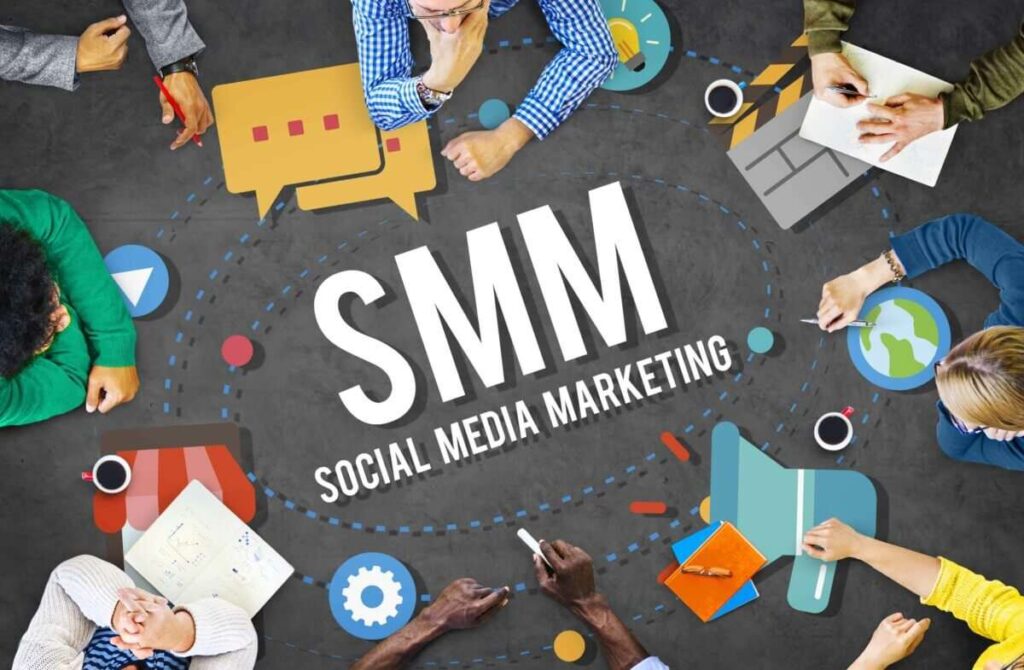What is SOCIAL MEDIA MARKETING?
Social media marketing (also known as digital marketing and e-marketing) involves using social media platforms to increase brand awareness and market products and services, and drive website traffic or promote products, services, or brands, engaging with the audience, and building an online presence is called Social Media Marketing (SMM).
With over half the world’s population on social media, it is no longer an option for companies/users to have an online presence – it is a necessity. Businesses/users both big and small utilize social media to grow their online presence, gain followers and connect with their audiences and increases their brand awareness.
This is the perfect place to learn on how to learn social media marketing, How to Do Social Media Marketing, How to Get into Social Media Marketing.
1.Set Clear Goals

The first step towards creating a social media marketing strategy is to is to know your social media Goals and make sure to align them with your goals or the whole Business’s objectives
Ask yourself of what you want to achieve from social media for your business and your own goals to grow?
Examples could be increasing brand awareness, driving website traffic, generating leads, boosting customer engagement and reviews.
Once you’ve set your big goals, break them down into smaller, achievable steps. This helps you identify the specific actions and strategies that are needed to achieve your goals. For example, reduce customer wait time from 10 minutes to two minutes by leveraging Facebook Messenger by next quarter.
2.Select Your Buyer Persona and Audience
Buyer’s persona is a fictional profile of your ideal customer based on market and audience research. In other words, it’s an imaginary image of a person that embodies the most important characteristics found within your broad audience.
- Do thorough audience research
It’s time to dig deep. You’re going to want to look into who your existing customers are, who your social audience is, and who your competitors are targeting
- Compile buyer’s persona
Gather all of the research done by you and start looking for common characteristics. As you group those characteristics together, you’ll have the concrete basis of your unique customer personas.
3. Determine Which Social Media Platforms You’ll Market On

Determine or research the type of business or brand you have made and select a social media marketing or social media platform/internet to grow your social brand awareness. Here are some famous social media platforms to grow your brand
- Consider your company
Your products and services, your brand personality, your business type…they should all influence your social media platform selection. Highly visual brands, like graphic designers and artists, should explore DeviantArt, and Instagram, among others.
If someone is at a bigger level or having it a more professional level or product then the most recommended app is LinkedIn.
Facebook, Instagram, YouTube are some evergreen apps or web to boost your content about your brand
- Research your competitors and others in your niche
1.What platforms they’re using, like You Tube, Instagram, etc.
2.What’s working/not working
3.How engaged the audience is on each channel
While you shouldn’t do something just because a competitor is, it’s useful to see what others in your space are doing, so you’re making an informed decision
4. Know Your Competitor

1. Who are your competitors?
2. What you need to know about your competitors
Monitor the way your competitors do business. Look at:
- the products or services your competitor provides and how they market them to their customers
- the prices they charge
- how they distribute and deliver their brand products
- how they improve customer loyalty and what back-up service they offer
- their brand values and design values
- whether they innovate – business methods as well as products
- their staff numbers and quality the of staff
- how they use IT – for example, if they’re technology-aware and offer a website and email
- who owns the business and what sort of person they are and their personality
- their media activities – check their website as well as local newspapers, television and any outdoor advertising
3. learning about your competitor
Go online
Look at competitor’s websites. Find out how they compare to yours/ what your image in their eyes about you. Check any interactive parts of the site that you for your website want to add to see if you could improve on it for your own website. Is the information free of charge? Is it easy to find? Is it what people search for ?
Business websites often give much information that businesses haven’t traditionally/offline revealed – from the history of the company to biographies of the staff.
5. Create Unique and Engaging Content

One can also use social media tools or AI for quality or unique content
Here is some guide to write engaging content for your followers. We propose six tactics:
- Use visuals
- Use an appealing layout
- Break text down into short parts
- Speak in an informal tone
- Add a call to action
- Diversify your content
6. Organize A Schedule for Your Posts (mandatory)

Be consistent in posting your brand content, as to be very punctual to show your sincerity to platform algorithms and your loyal audience.
Being consistent in social media marketing /social media proves one’s professionality and sincerity.
7. Review And Adjust Your Strategy

Now review your whole strategy and look for any mistakes you have done and fix them
Benefits of Social Media Marketing

Brand Awareness
Direct connection with users
increased website traffic
Increased revenue
Cost effective marketing
A chance to connect with potential collaborators
Pros & Cons

| Pros | Cons |
| Reach larger audience | Time consuming practice |
| Connect directly with your audience | Non favorable publicity |
| Build brand loyalty | Lengthy result manifestation |
| Monitor customer feedback | Stay engage and active |
| Get access to many growths’ opportunity | Difficult to fully understand the true ROI |
| Grow your business at a higher rate | |
| Get access to paid advertising |
Conclusion:
Social media marketing is an essential tool for businesses of all sizes in today’s digital age. By setting clear goals, understanding your audience, selecting the right platforms, and studying your competitors, you can create a robust social media strategy. Developing unique and engaging content, maintaining a consistent posting schedule, and continuously reviewing and adjusting your approach will help you build a strong online presence. Embracing these strategies can lead to increased brand awareness, direct connections with users, higher website traffic, and ultimately, greater revenue. Start implementing this secret strategy today and watch your social media marketing efforts transform your business.
Article Credit- Neal Shrivastav, Student of Advanced Digital Marketing Course.









